It feels strange to say this about a video game that revolves around beating up other human beings, but Street Fighter 6 has a really wholesome vibe.
The new entry in the renowned competitive fighting game still plays host to white-knuckled bouts between a colourful cast of international combatants, but something is definitely different this time. The whole affair is wrapped in an unmissable aura of positivity and hospitality.
Aspects geared toward serious competitors still remain, as do hints of a darker, overarching narrative about a global criminal organisation (that uses martial arts tournaments as a front, naturally). But the big front that Street Fighter 6 itself puts up is a welcome and inclusive one. It’s an outstretched hand that offers to lead you through a journey into friendly competition, and help you every step of the way.
It’s a fighting game fashioned not around glorifying violence or edgy melodrama, but around the idea that anyone can enjoy martial arts, fighting games, and find value in working towards self-improvement – whatever that may look like – as a part of a community. And it’s all bound together with a wonderfully vibrant, stylish and infectiously upbeat aesthetic.
Together with a highly refined iteration of the series’ thoughtfully-paced fighting system, as well as plenty of helpful modes, tools and assistance to cater to various degrees of familiarity with the genre, this is a fighting game that is approachable and has a great deal to offer. It feels good to play, and it makes you feel good, too. Street Fighter 6 is the best the series has ever been.
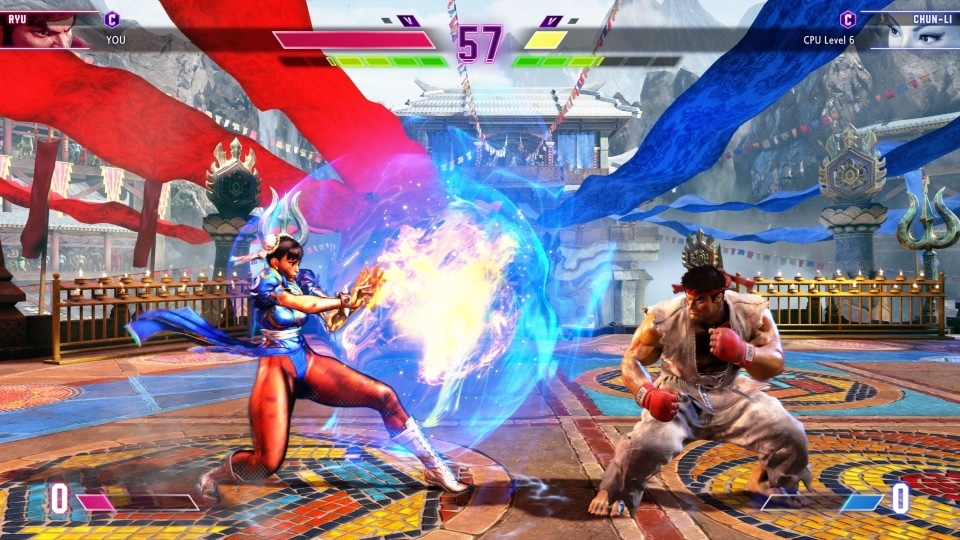
The Street Fighter 6 World Tour
The backbone of Street Fighter 6’s identity is World Tour, a single-player, RPG adventure that is a series first in several respects. At its centre is you and your customisable avatar, cast as a fresh-faced novice fighter searching for the ephemeral meaning of strength, whatever that may be.
The character roster of Street Fighter 6, many of whom have been series staples for over 35 years, take a surprising backset in the new chapter of Street Fighter lore. Unravelling over the course of around 20 hours, you’ll explore two city maps and several smaller, global pitstops, in what reveals itself to be a slow burn training program for learning how to play Street Fighter 6 from scratch.
The Street Fighter cast serve as mentors and moral support in this journey. As you meet them out in the world, they offer to share philosophies, life stories, and most importantly, their fighting styles with you. At first, you’ll gain access to their ‘normal’ attacks and a couple of special moves, and eventually, the rest of their repertoire as you build experience with the style.
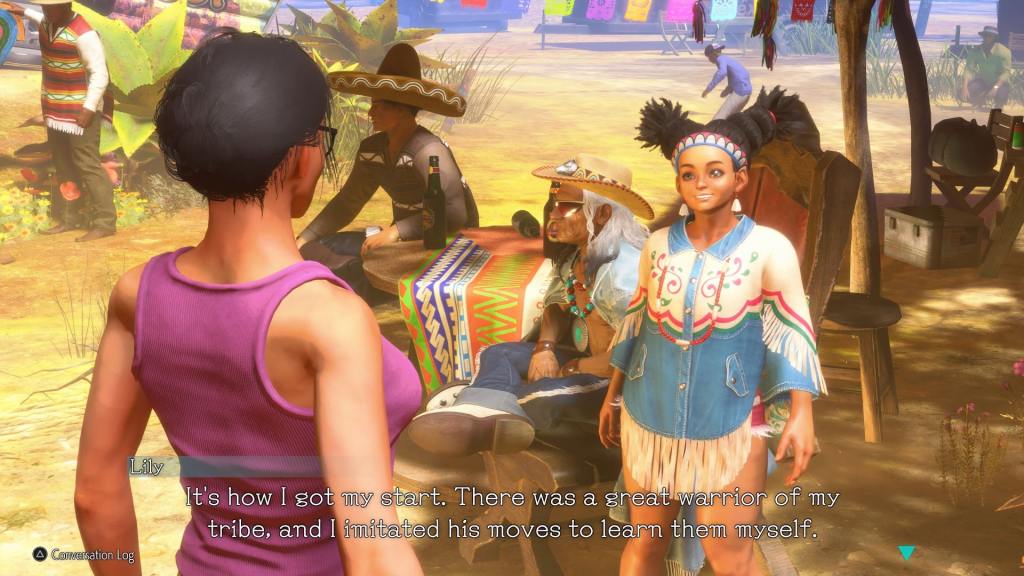
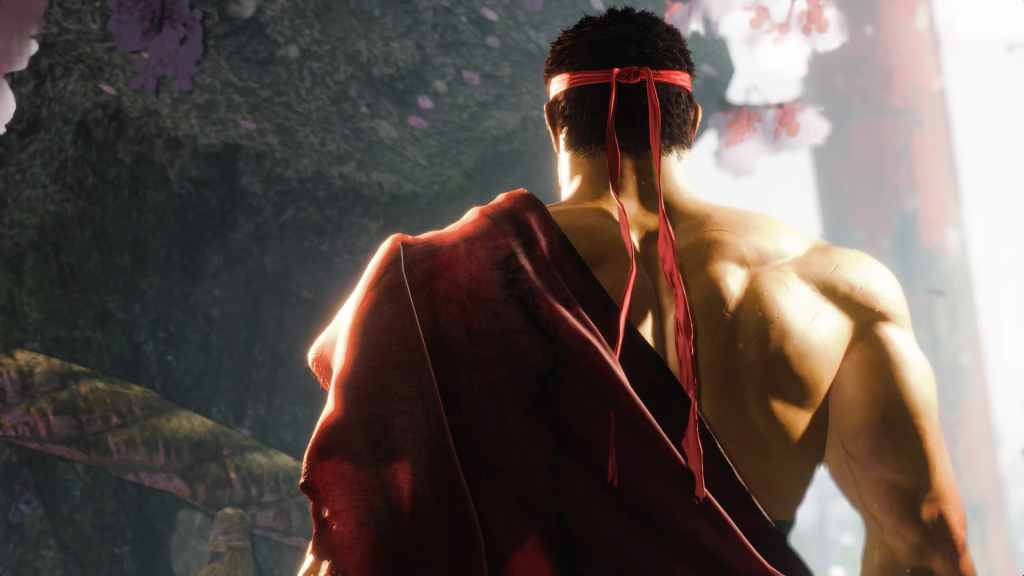
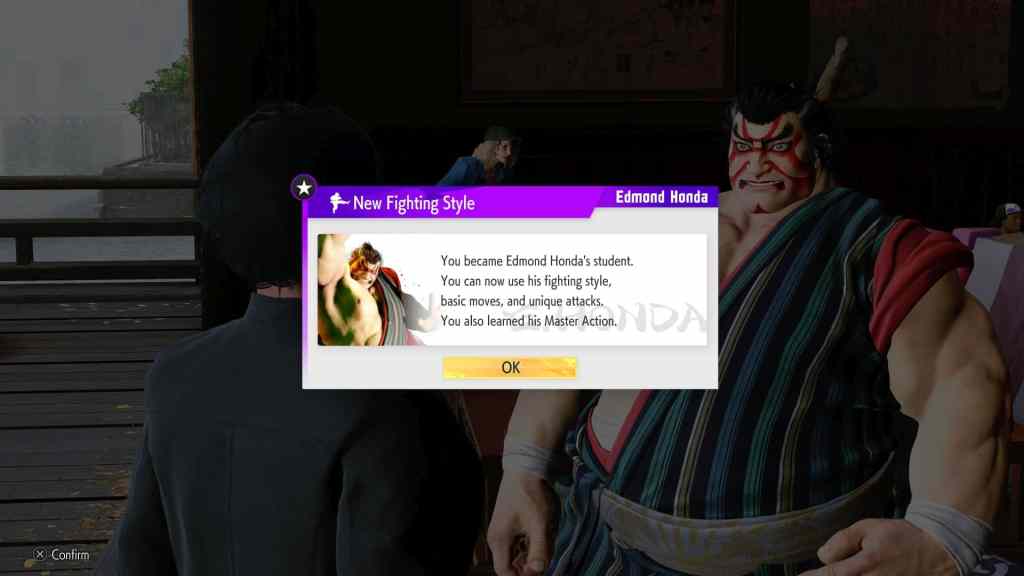
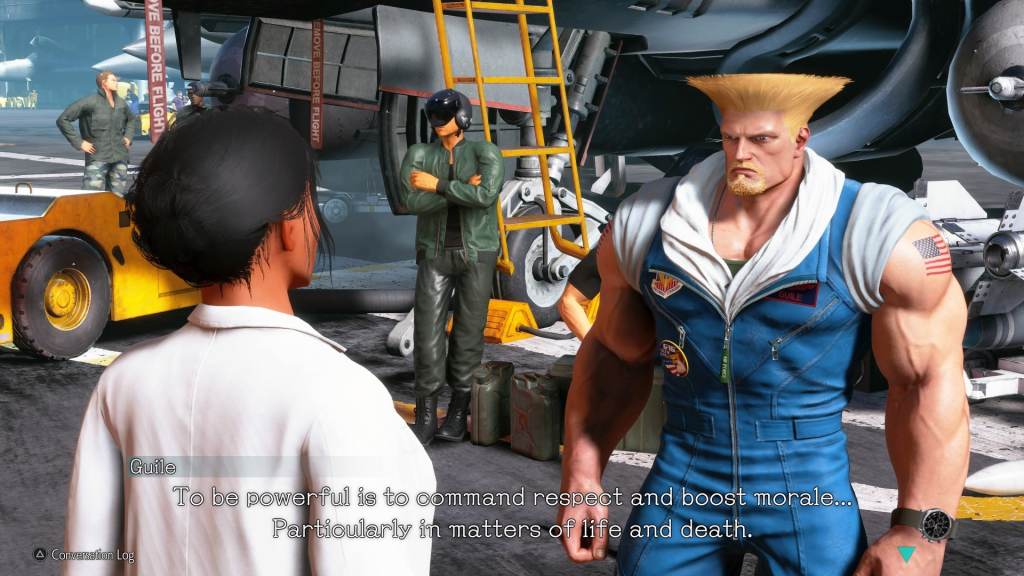
There’s no shortage of opportunities to get into quick battles and practice, between a slew of quests (whose resolutions all involve fighting, of course) and battling the goofy, cardboard box-wearing hooligans that roam the streets. Not only that, virtually every inhabitant in this world – from office workers to monks, pizza chefs to pro wrestlers – is always up for engaging in a friendly fight at your request, which take place in Street Fighter’s standard 2D format.
The persistent dangling carrot of useful items and experience points to help you on your quest is a very great incentive to keep you constantly pursuing fights, and consciously familiarising yourself with the attacks of your chosen master. It’s a clever learning tool, because the constant, low-stakes repetition of battles will eventually make you feel much more confident in using a chosen style.
As longtime Street Fighter players might know, internalising exactly what kind of attack will come out when you use a certain command is a vital step in the path to enjoying Street Fighter. The same goes for knowing how to utilise particular special techniques as part of your repertoire of abilities, and the drip-feed of special moves in World Tour greatly helps you adopt a good regimen.
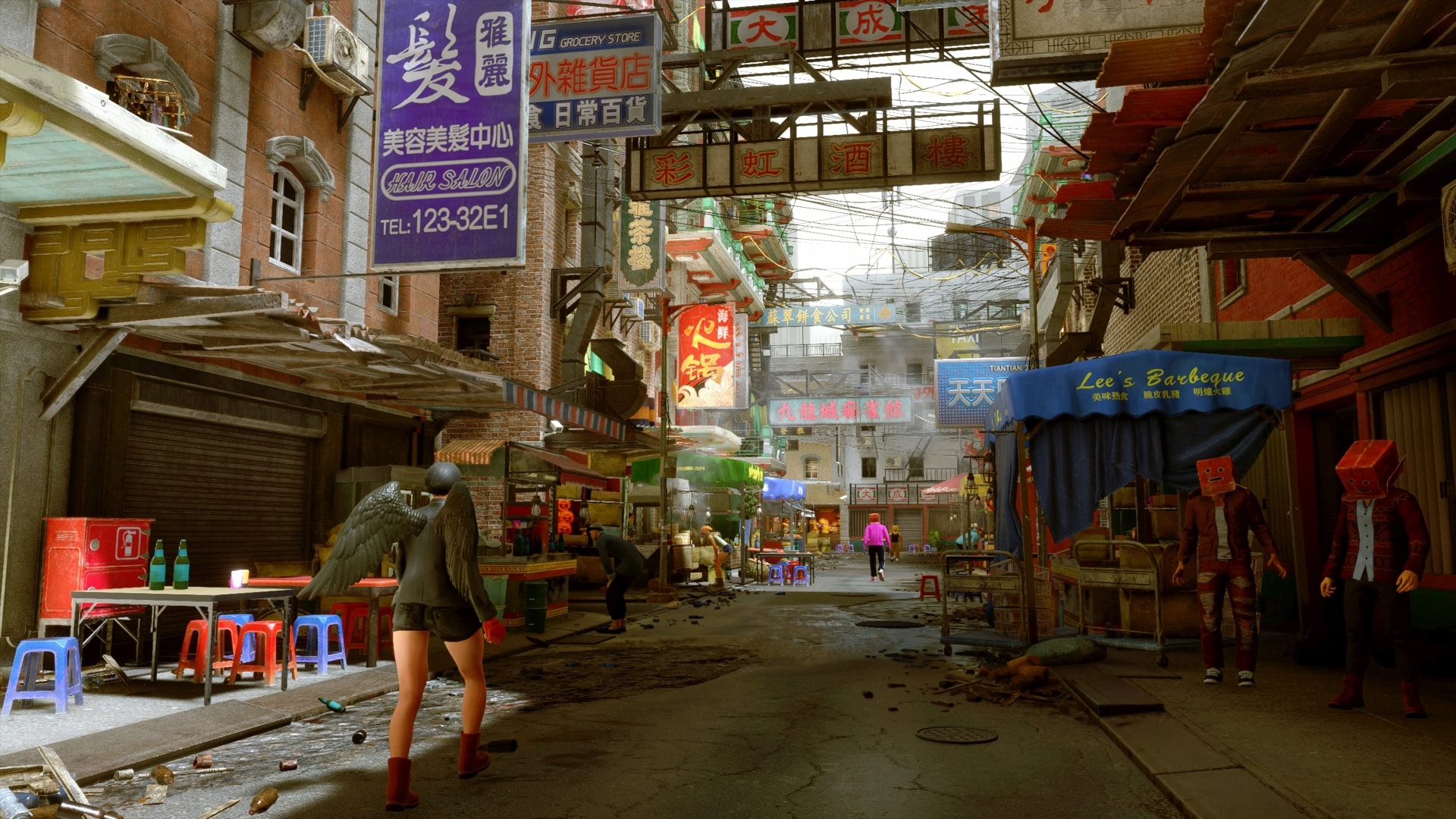
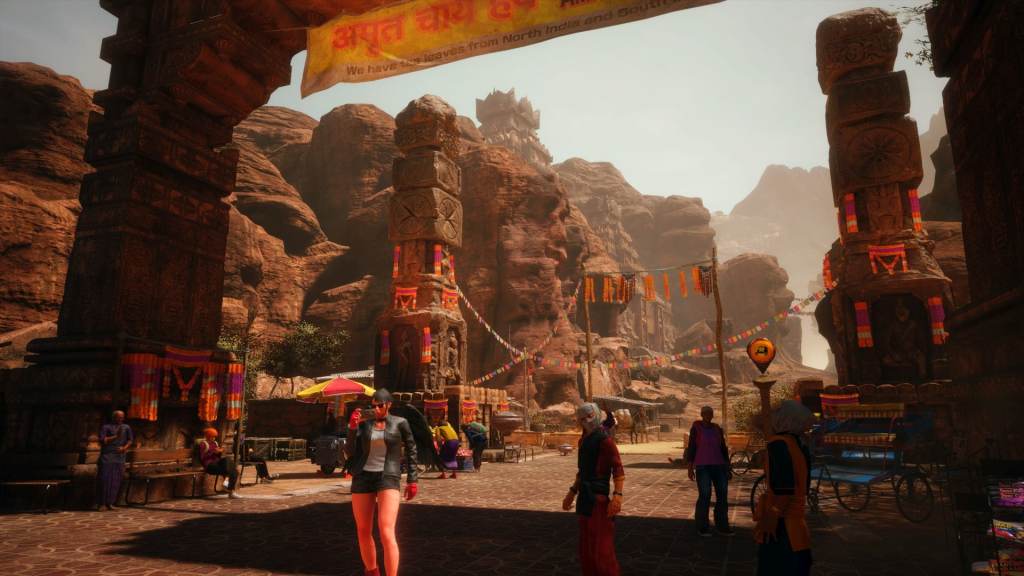
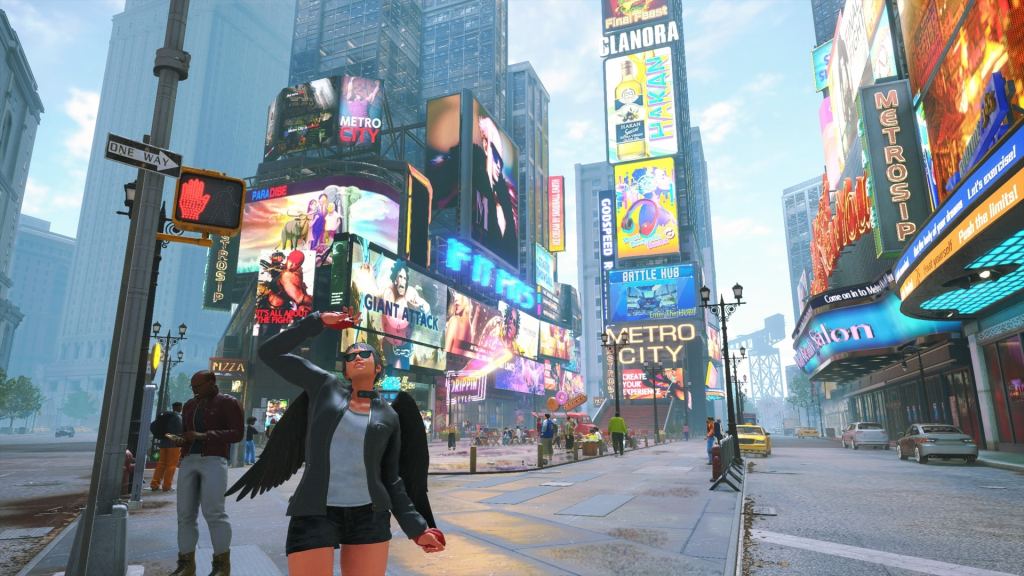
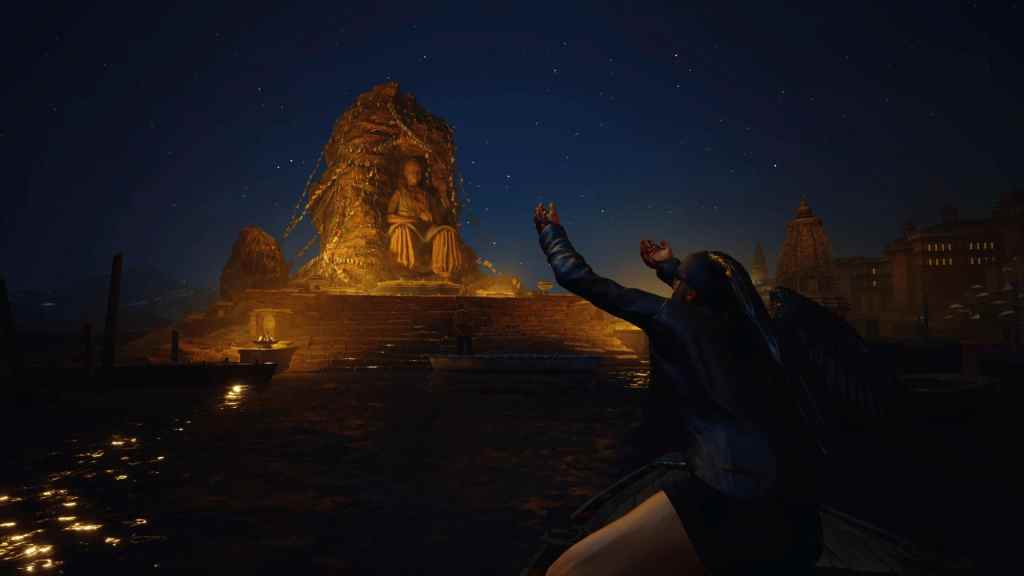
And even though the concept of a world where every citizen loves to get into a casual fistfight is bizarre, Street Fighter 6’s World Tour treats it as a kind of wholesome shared pastime, a community where everyone loves to help their neighbour get stronger at martial arts for whatever reason (perhaps because the setting of Metro City used to be the crime-infested hellhole setting of Final Fight). Regardless, it’s a heartening setup.
That touch of the weird eventually gets weirder, when World Tour introduces opponents like robot vacuum cleaners, flying drones, and refrigerators (seriously). But as you laugh at the absurdity of the encounters, the game is also subtly teaching you how to use particular techniques – like how to use low attacks, how to time jumping aerial attacks, how to use manoeuvres like cross-ups (hitting your opponent from behind) and more. Side activities, such as the mini-games that make up the world’s ‘part-time jobs’, also serve a similar purpose, acting as training programs for performing complex button commands or parrying attacks, while earning a bit of cash for your avatar at the same time.
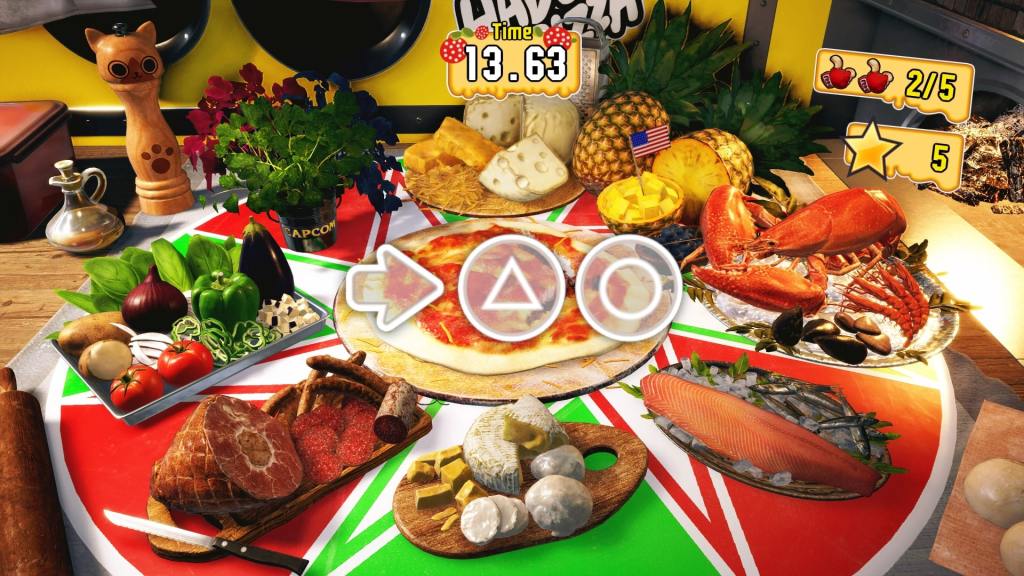
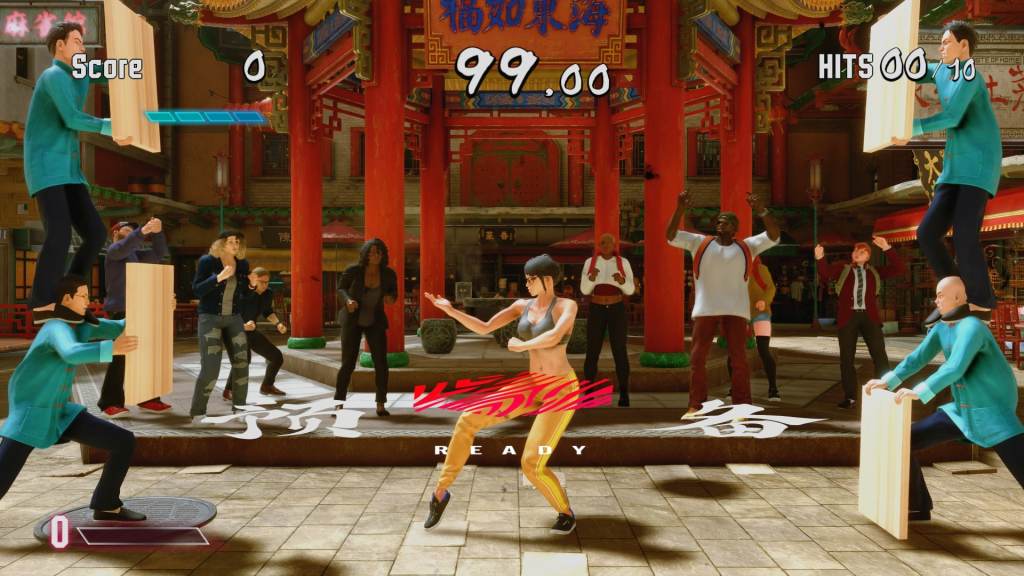
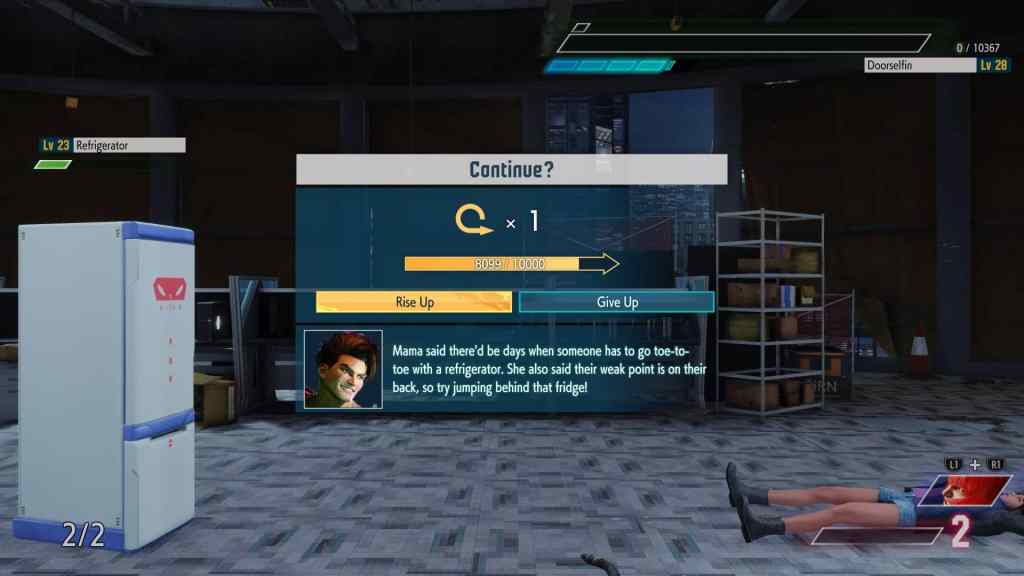

Although it’s relatively rudimentary as far as RPGs go, World Tour nevertheless serves as an incredibly engaging and practical training tool in disguise. Even as a lifelong Street Fighter player, I found it to be an excellent way to intimately familiarise myself with the repertoires of the brand new characters to Street Fighter 6, away from the pressures of human competition or increasingly difficult AI challenges. Even after completing the main quest line, you feel motivated to dive back in, perhaps switching up your style, and continuing to attack side content and random battles.
Training Tools and Assistance
There are a few limitations in using the World Tour as a complete training program – the option to allow you to equip special moves from several different characters at once actually limits your ability to use the full repertoire of certain characters, and can potentially encourage bad habits. Thankfully, Street Fighter 6 also sports a very comprehensive series of character-specific tutorials, training programs, and tools to help you better understand the game at various levels.
There has been an impressive amount of detail applied to the resources available in game, especially considering that historically, the mechanics and strategies for fighting games have been characterised by obscure and uncertain knowledge.
In Street Fighter 6, the tutorials for both the game’s core mechanics, as well as individual character playstyles, are very comprehensive. Not only do you get a rundown of each character’s special moves, as well as a series of practical combo challenges – as has become expected – there is also meaningful written advice on things like core strategies, suggested mindsets, and tips on how to best use fundamental techniques. The approach is more personal, rather than clinical – each tutorial is lightly flavoured in the character’s tone of voice – and the package overall is exceedingly useful in getting your head around the game, and the possibilities of each character.
On the more advanced side of the scale, Street Fighter 6 also features a hearty selection of features for more enthusiastic players in its freeform training mode, building on tools that were introduced in the last generation of fighting games. The star of the show is a visual frame counter that shows incredibly detailed information about the properties of each technique down to the 1/60th of a second for both for the attacker and the defender, as well as an action timer gauge, that helps to give some transparency around the timing for building and executing combos. A series of template situations for training under certain match conditions is also extremely convenient, and the mode has countless more options for tweaking the training environment.
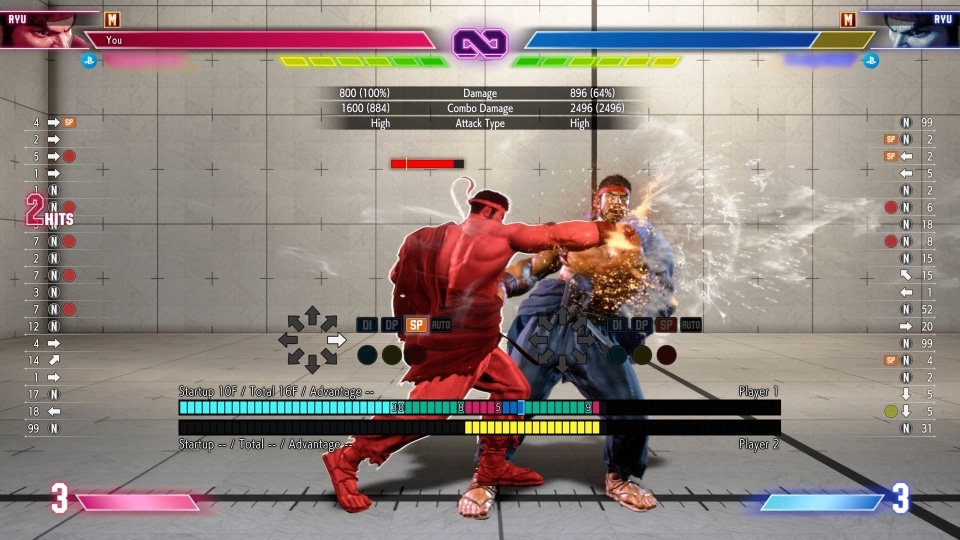
All of these training features are available for both of Street Fighter 6’s two primary control schemes – Classic, which adopts the traditional 6-button style, and Modern, a simpler style that distils the game to three attack buttons, and a single button for special moves. With both schemes being given the same treatment, it’s clear that Street Fighter 6 is attempting to seriously cater for a wide berth of potential skill levels, and that’s very commendable.
The Street Fighter 6 Battle Hub
Outside of World Tour, Street Fighter 6 houses all the traditional modes common to fighting games in its ‘Fighting Ground’, a collection that includes the aforementioned Training tools, a single-player Arcade Mode with some light story elements, Versus multiplayer, an ‘Extreme Battle’ mode that introduces unique modifiers to matches, as well as online matchmaking for its ranked ladder and casual battles.
But the true ongoing lifeblood of Street Fighter 6 is, again, one themed around community and positivity. The Battle Hub is a shared online social space designed to allow players to gather together and connect in a space that effectively recreates the lost experience of playing Street Fighter in an arcade with a crowd of complete strangers, maybe with a friend or two.
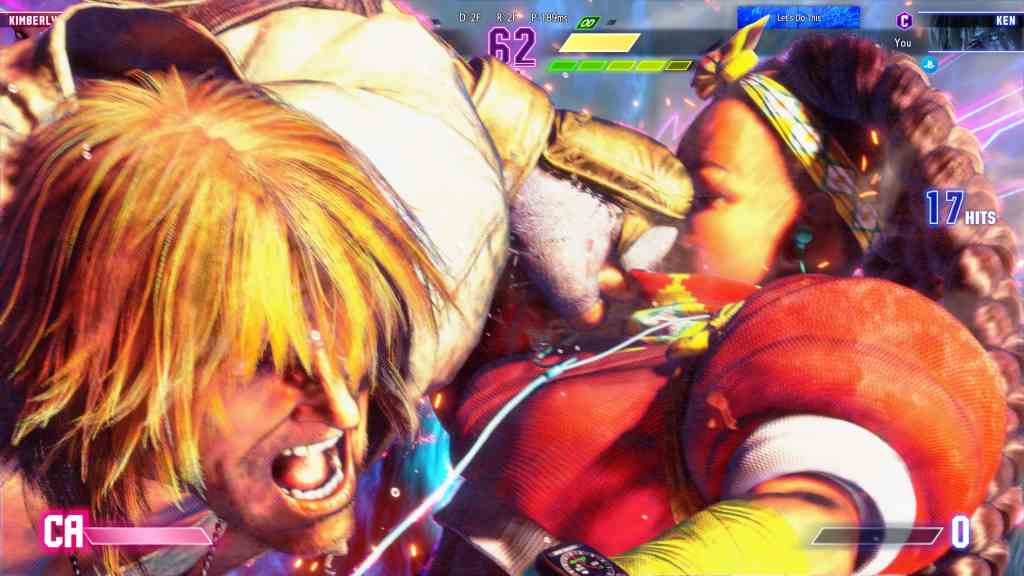
While you can still access the standard ranked and casual matchmaking options from the Battle Hub, the area itself is also littered with several two-player arcade machines that allow those present to sit down and find an opponent for continuous play. Not only that, it also allows for others to virtually come up to the cabinet and observe the match in progress, and even call dibs on the next turn.
Although the idea seems hokey on paper, this virtual embodiment adds a great deal to the online experience of playing Street Fighter online, which could previously be a very solitary and isolating experience.
There are other attractions in Battle Hub too, making it more than just a place to go when you want to fight. A rotating selection of classic Capcom arcade games like Final Fight and Street Fighter II is a nice touch, with leaderboard challenges for those who already know these games like the back of their hands.
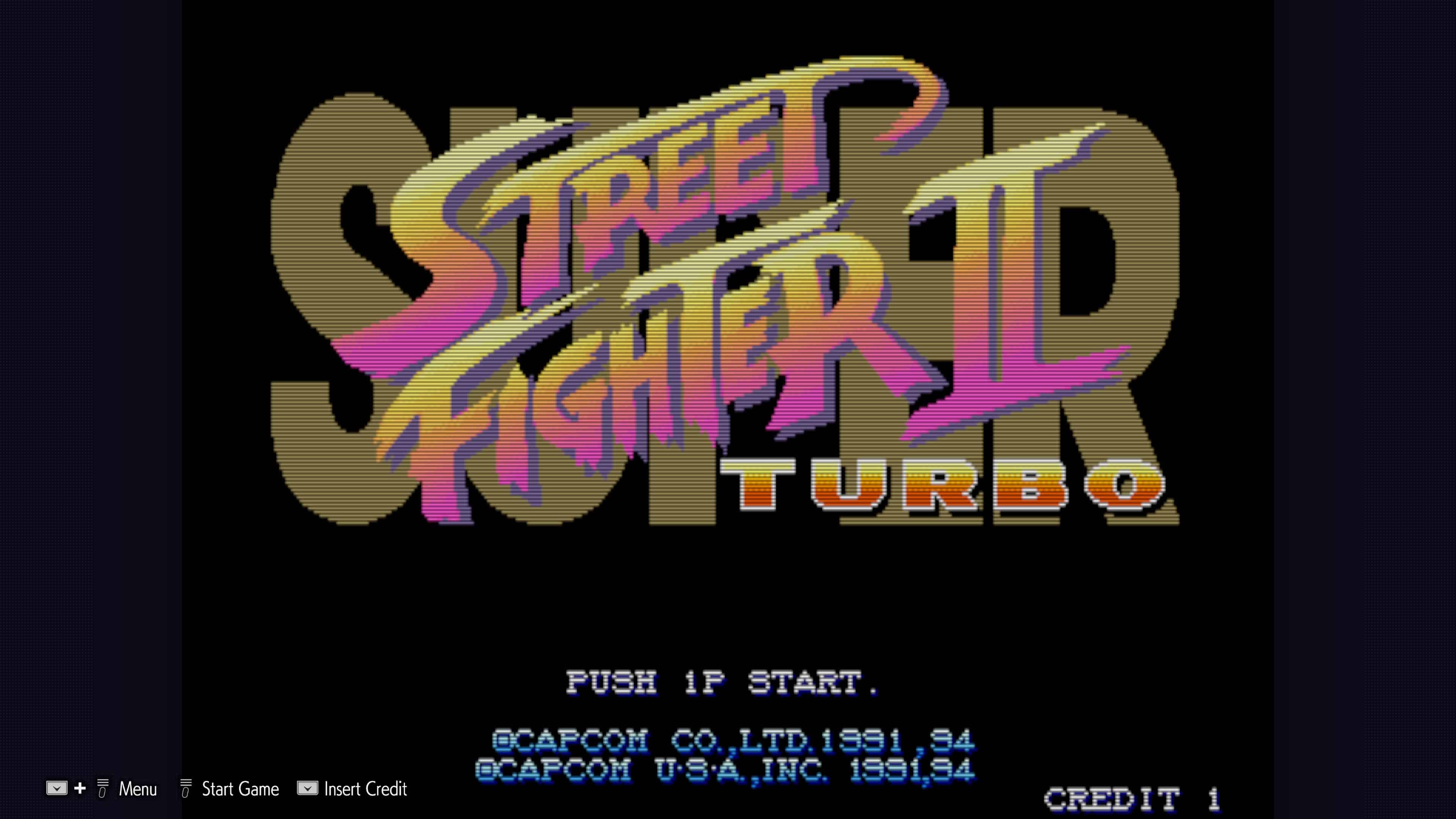
Stores dole out cosmetic items for your player avatar, who is carried over from World Tour, and giant screens around the Battle Hub keep tabs on player activity on the server, making it a destination for passive viewing as well.
At the peak of the online betas that ran for the Street Fighter 6 Battle Hub, it genuinely felt like a lively party, with masses of bodies crowding around machines. During the more sedated pre-release period that was hosted for reviewers, even just having 4-6 people crowding around a machine was enough to give the game a sense of excitement, of feeling like you were a part of a shared moment in time.
While the idea of a shared lobby is not an original one – games from Arc System Works like Guilty Gear and Dragon Ball FighterZ have implemented them in the past – they’ve never been as compelling to simply exist in. The Battle Hub feels like a social space first and foremost, rather than just a convoluted matchmaking system. It’s well executed, and feels like a destination you want to hang out in for the night, if only for the relaxing jazz soundtrack that plays over the speakers.
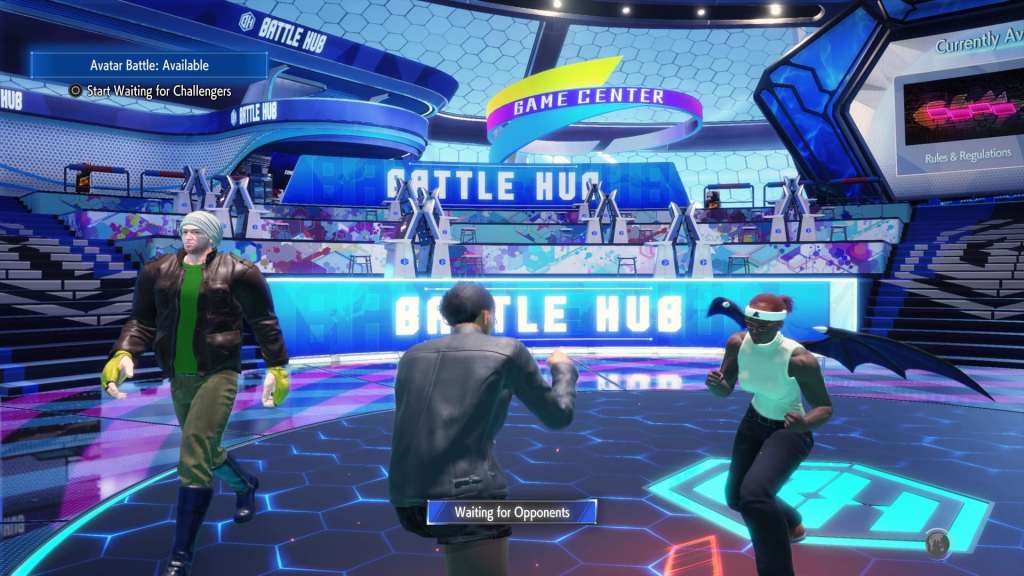
Acknowledgement must also be given to the game’s strong netcode, which was problem free during several Closed and Open Betas, as well as during the pre-release review period. As someone situated in Oceania – a location which does not have a dedicated Battle Hub server – I had little issues using servers located in the US and Europe (the latter of which is unheard of), while having high quality online matches with players from halfway across the world. The game’s rollback netcode works exceptionally well, and even matches that attracted 300 ping in latency certainly didn’t feel anywhere near that bad.
Disclaimer: These online experiences are based on several Closed and Open Beta tests for the Street Fighter 6 Battle Hub, as well as an additional pre-release review period. They do not reflect the performance of the Battle Hub upon its general release.
Fighting system
Of course, the quality of all these experiences would be nothing if not for the rock-solid foundation of Street Fighter 6’s fighting engine, which features a straightforward collection of mechanics, after a slightly more convoluted departure in the previous instalment.
Aside from regular attacks and special moves, every character has a three-tiered Super Meter that charges with giving and receiving attacks, and three super moves that require a certain level to be reached before you can execute them.
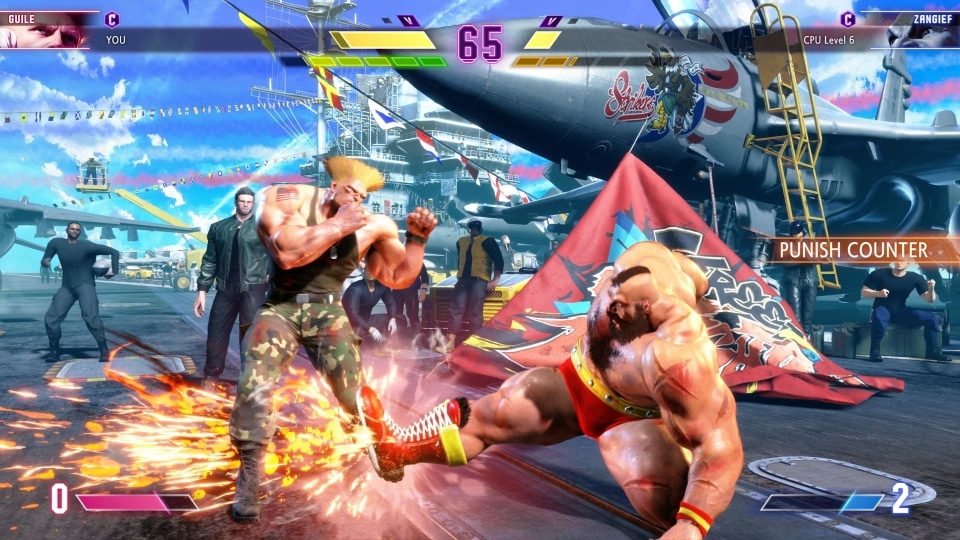
A separate ‘Drive Meter’ fuels a collection of four universal techniques, available to each character. One is a very accessible Parry system, executed by simply holding down the button combination, though great advantages are rewarded for parrying an attack at just the right time. The Drive Rush allows for an instantaneous dash across the screen that opens up new comboing opportunities. A Drive Impact attack actively absorbs hits and knocks an opponent back, while the Drive Reversal serves as a defensive variant of that technique, which pushes an attacker away while blocking.
All together, the Drive systems appear to encourage a more aggressive style of play at this early stage of the game’s life, but one that still requires a lot of consideration, given that each technique has clear responses and counters that are very easy to execute.
Overall, the feel of Street Fighter remains immaculate, with attacking controls being very responsive, and impacts feeling crunchy and significant, making the inherent back and forth of every fight incredibly satisfying. The character roster is filled with varied series staples – every original fighter from Street Fighter II is present, some with meaningful changes – but the newcomers all feel like natural and valuable additions, too, adding a great diversity in playstyles and tempos.
New favourites include the very fulfilling heavy-hitters like Marissa and Lily, while characters like Manon and Kimberly fill some unique gaps with techniques that are incredibly rewarding to land. Even Luke, arguably the most straightforward and generic of the bunch, serves an important role in being the decidedly approachable starter character.
Closing Remarks
In allowing you to actually hit the virtual streets, Street Fighter 6 opens itself up to exploring a whole new philosophy about its existence, exploring the reason why we fight and work to get stronger. In doing so, Street Fighter frames one-on-one fighting not as an antagonistic or violent act, but one of collective self-improvement. Jumping into World Tour or the Battle Hub online is exciting, and uplifting. Their paths are lined with positivity, neon graffiti, and catchy uptempo jazz and hip-hop tracks.
Street Fighter 6 is an exceedingly good fighting game. But more than that, it’s an excellent training tool. It’s a fulfilling adventure. It’s a lively community gathering place. It’s an endearingly idealistic and inspiring world of appreciation for martial arts and friendly competition, exceptionally executed in every respect.
Five Stars: ★★★★★
STREET FIGHTER 6
Platforms: PC, PlayStation 4, PlayStation 5, Xbox Series X/S
Developer: Capcom
Publisher: Capcom
Release Date: 2 June 2023
|
$41.49
|
$40.01
|
£44.47
|
The PlayStation 5 version of Street Fighter 6 was provided and played for the purposes of this review. GamesHub has affiliate partnerships. These do not influence editorial content. GamesHub may earn a small percentage of commission for products purchased via affiliate links.








